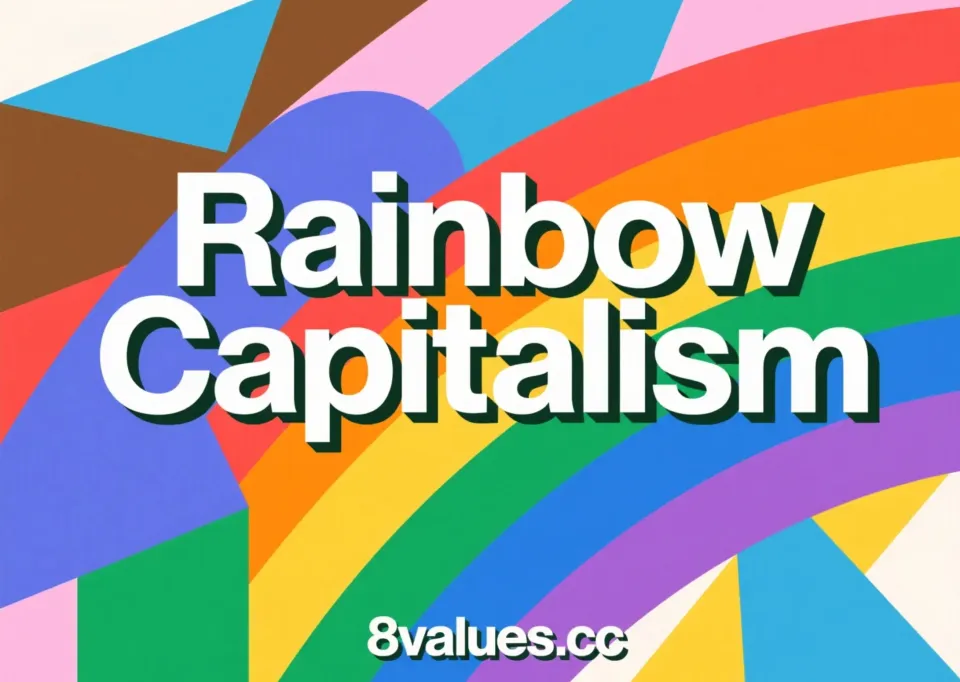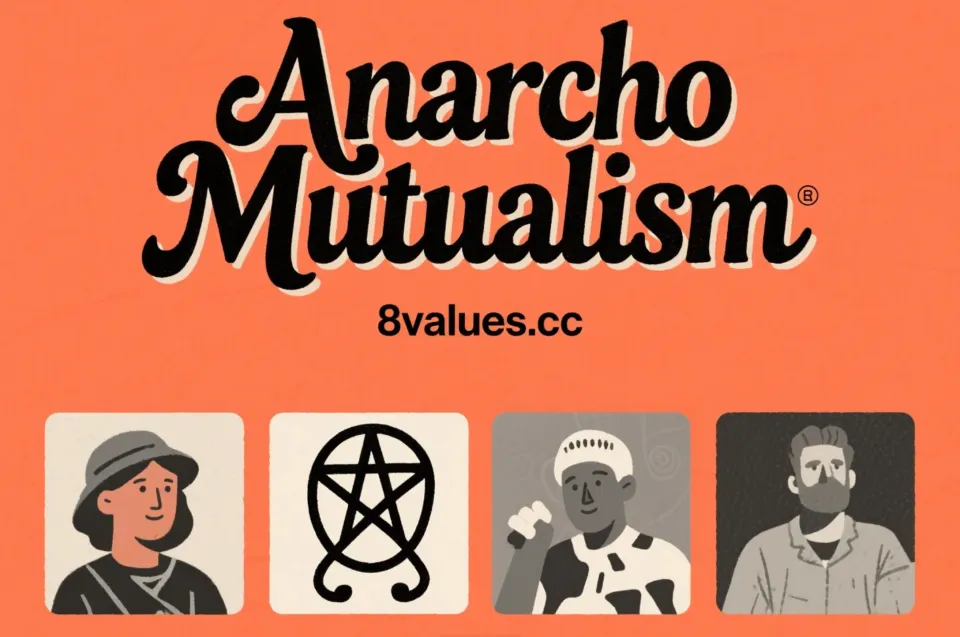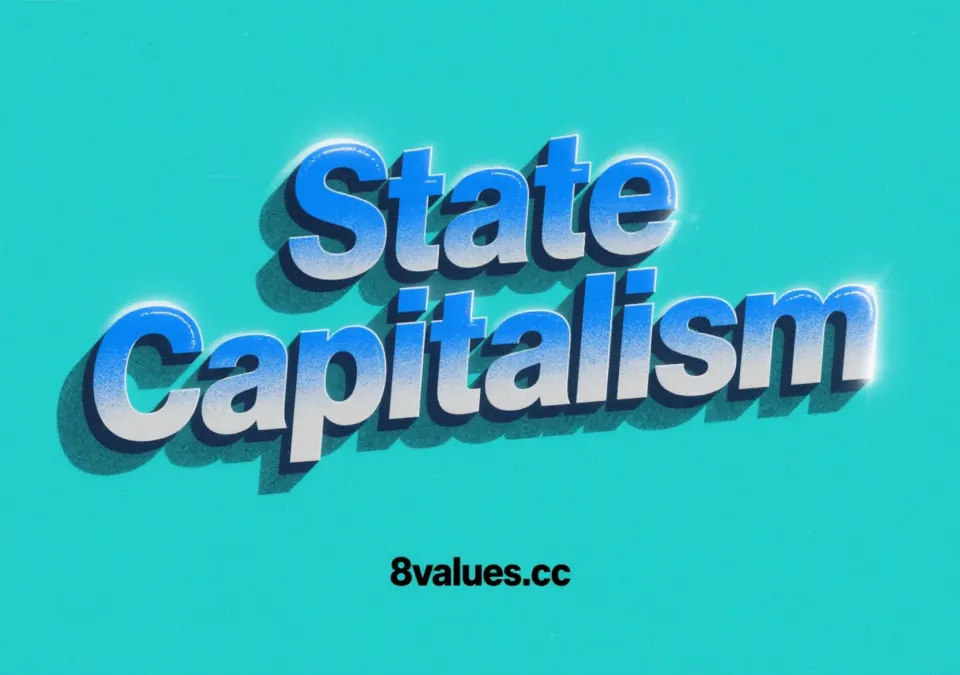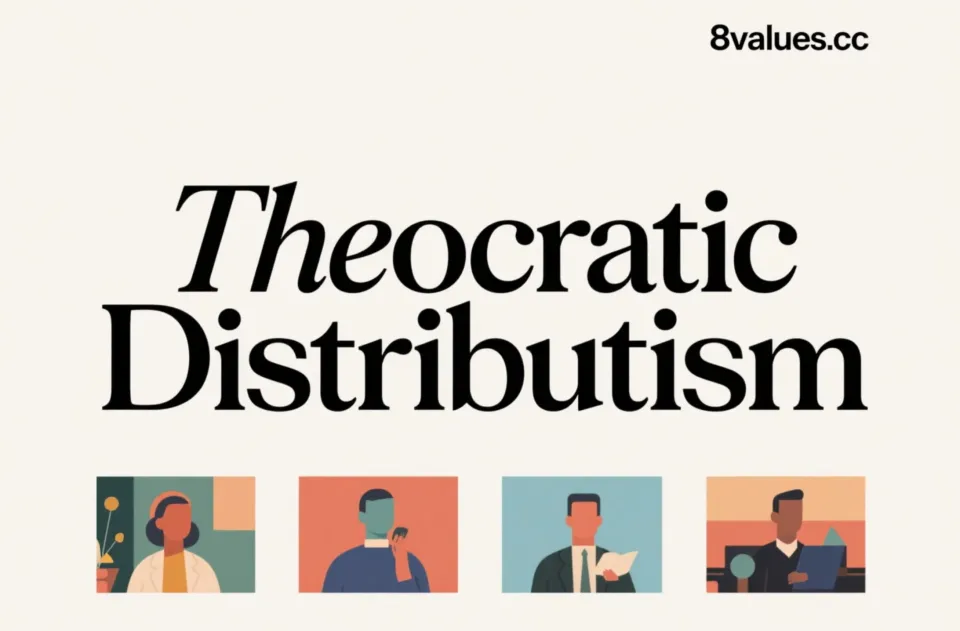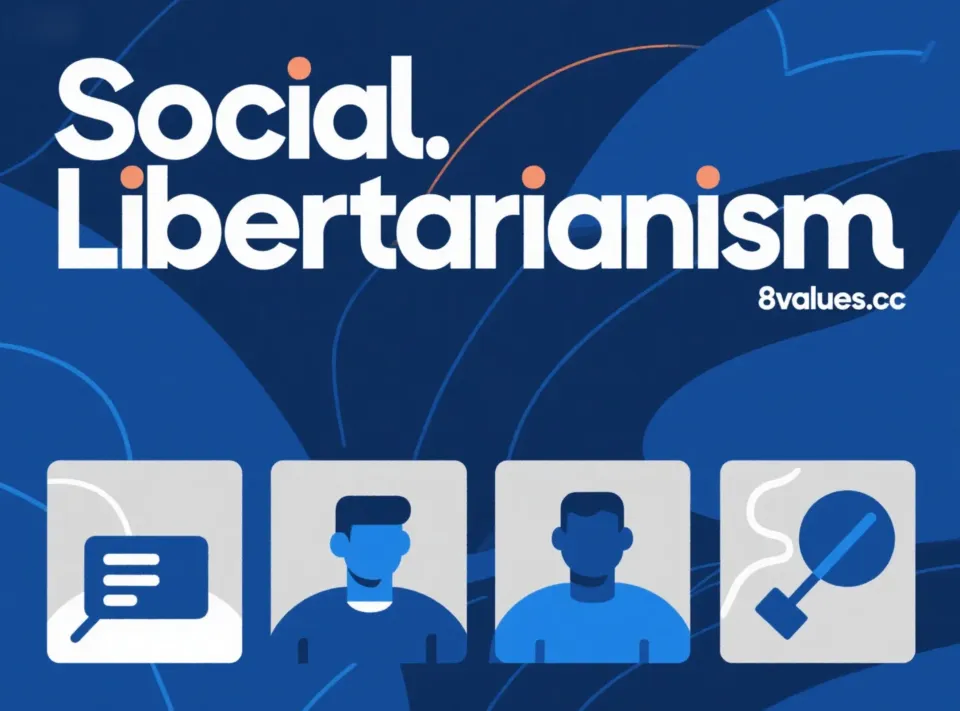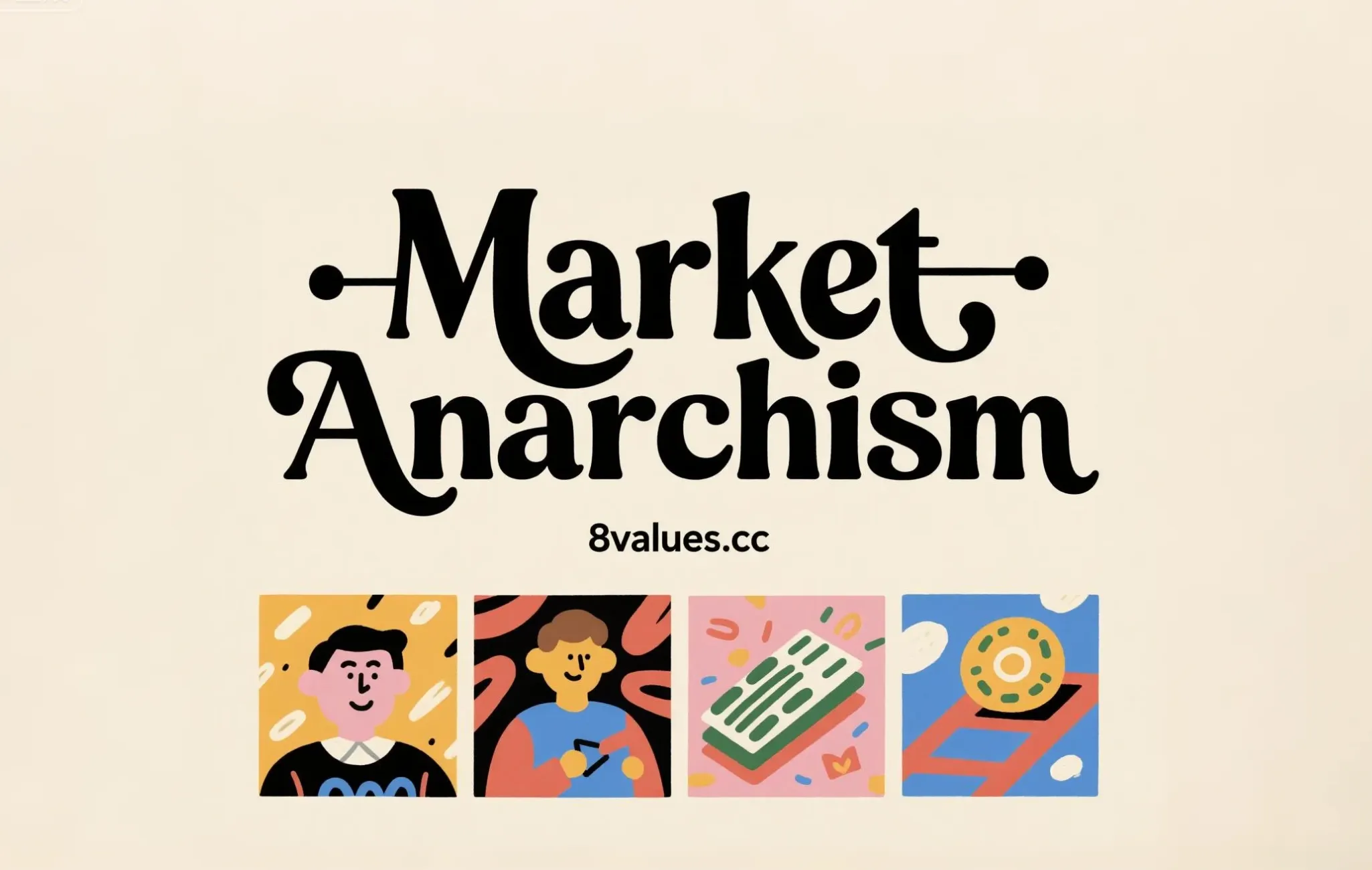In-depth interpretation of Rainbow Capitalism: Analysis of LGBTQ+ values and ideologies under the pink economy
What is Rainbow Capitalism or Pink Capitalism? This article will provide a detailed analysis of the definition of rainbow capitalism, its development history, major controversies (such as rainbow whitewashing), and its impact on the LGBTQ+ community. Learn how business and ideology intersect and take your political values ideological leanings test.
In recent years, with the rise of the LGBTQ+ (lesbian, gay, bisexual, transgender, queer, etc.) rights movement and increasing public acceptance around the world, a significant economic phenomenon has also emerged: Rainbow Capitalism , which is essentially synonymous with Pink Capitalism, refers to the phenomenon of capitalism, corporate capitalism, and consumerism appropriating and profiting from the LGBTQ+ movement.
The emergence of this concept reflects the gradual acceptance of LGBTQ+ groups in society and the formation of sufficient purchasing power, the so-called "Pink Money" or "Pink Economy". Early rainbow capitalism was limited to specific venues such as gay bars and gay bathhouses, but by the early 21st century it had expanded to nearly every industry. If you're interested in the political philosophy behind this economic phenomenon, try the RightValues Right-Wing Political Spectrum Ideology Test to explore your core values.
The definition and naming of Rainbow Capitalism
Pink Capitalism is a concept that encompasses the gay liberation movement, sexual diversity services, and profit-making from consumerism, markets, and political economies. It focuses on gaining wealth from lesbian, gay, transgender, bisexual and other sexual minorities.
Rainbow Capitalism is often used to critically describe corporate attempts to create a false sense of support for the LGBTQ+ community while extracting financial gain from it whenever possible, especially during Pride Month each year.
Rainbow Capitalism is also known as Pink Capitalism , Queer Capitalism, Homocapitalism or Gay Capitalism.
The word "pink" originated from the pink inverted triangle armbands worn by Nazi concentration camps to identify gay prisoners during World War II. Since then, the logo and color have been transformed into one of the symbols of the gay movement. This is how the Pink Economy or Rainbow Economy was born. It is a niche consumer market based on gender and sexual orientation, covering a series of economic activities arising from the needs of the LGBTQ+ community.
Historical development and market potential of Pink Economy
The rise of the pink economy is closely tied to the historical development of the LGBTQ+ rights movement. In the 1990s, as discrimination against the gay community gradually decreased, LGBTQ+ people gained more employment opportunities, which increased their purchasing power, giving rise to the concept of “Pink Money.”
Market Attraction : The LGBTQ+ community has huge spending power, providing merchants with a large number of potential consumers. It is estimated that the annual spending power (rainbow GDP) of the global LGBTQ+ community is approximately US$4.7 trillion, while the total purchasing power of global LGBTQ+ adults in 2019 was approximately US$3.7 trillion.
Target Audience Characteristics : Marketers and business operators often view this group as affluent and loyal. Historically, marketing strategies have tended to target white, middle-class, urban gay men who are believed to have higher disposable income and spending power.
Early Marketing : The practice of including LGBTQ+ messages in corporate advertising began in the 1980s and gained real traction in the 1990s. For example, through careful market research, Subaru discovered that a significant portion of its existing consumer base in the United States were lesbians.
As LGBTQ+ interests grew in popularity around the world, reaching a crescendo in the late 2010s, big businesses wanted to join the wave. Many businesses now cater specifically to gay customers.
Manifestations of Rainbow Marketing
Rainbow capitalism takes many forms in today’s society, especially during Pride Month each June:
- Symbolic products : Companies launch products with rainbow flag elements, such as T-shirts, shoes, rainbow-packaged drinks or food. For example, Facebook launched rainbow filters during Pride Month, and brands such as Target launched a series of pride products.
- Branding changes : Many companies will change their corporate logos or website colors to rainbow colors during Pride Month to show support for the LGBTQ+ community.
- Sponsor events : Companies can enhance their brand image by sponsoring pride parades, LGBTQ+ film festivals or related charity events. For example, Absolut Vodka is considered one of the early brands to support this group and has long sponsored LGBTQ+ events.
- Workplace advocacy : Companies attract talent and consumers by promoting their inclusive policies, such as anti-discrimination policies, partner benefits and gender-affirming healthcare for LGBTQ+ employees. Many European and American companies will establish DEI (diversity, equity, and inclusion) related departments. Capitalism encourages companies to promote LGBTQ+ rights in order to increase employee satisfaction, expand their consumer base and maintain a positive public image.
Controversy and Criticism of Rainbow Capitalism
While Rainbow Capitalism has brought visibility and market opportunities, it has also generated widespread controversy and criticism, particularly within the LGBTQ+ community and across the spectrum of political ideology. If you want to learn more about how this phenomenon relates to the political spectrum, you can refer to the LeftValues left-wing political values test and the 9Axes political coordinates test .
1. Pinkwashing
This is one of the main criticisms leveled at rainbow capitalism . Pinkwashing refers to companies covering up their deficiencies in LGBTQ+ rights or other negative behaviors by superficially supporting LGBTQ+.
- Superficiality and Seasonality : Critics argue that many companies only focus on showing support during Pride Month in June and then revert to a "neutral" stance. This seasonal behavior is seen as a show of lack of substantive support for the LGBTQ+ community.
- Deeds do not match their words : While some companies publicly support the LGBTQ+ community, they privately provide financial support to politicians or organizations that oppose LGBTQ+ rights.
- Ignoring Structural Issues : Rainbow whitewashing obscures the reality of violence and oppression that LGBTQ+ people face through superficial aid distraction.
2. Commodification and marginalization
Critics believe that rainbow capitalism turns LGBTQ+ identities into marketable commodities, and its essence is to profit from the identities of marginalized groups.
- Depoliticization : Corporate-led marketing campaigns often strip away the radical politics and historical struggles of the LGBTQ+ movement and transform it into pure consumer behavior. For example, Pride Month grew out of the protests of the 1969 Stonewall Riots , but is now often seen as a commercial celebration.
- Exclusion of vulnerable groups : Pink capitalism ’s marketing strategies often favor white, middle-class, cisgender queer people, which can result in more vulnerable members of the LGBTQ+ community, such as trans people, people of color, or those with low incomes, being overlooked. This reinforces the consumerist logic of “only those with money have rights.”
- Selective support : Companies tend to be active in areas where LGBTQ+ rights are widely accepted (such as certain cities or Western markets), but in conservative areas, remain silent or adjust their marketing strategies to avoid hurting profits.
The dual impact of Rainbow Capitalism
Despite considerable criticism, rainbow capitalism has had a complex dual impact on the LGBTQ+ community.
Positive aspects:
- Increase visibility and acceptance : Commercial marketing brings LGBTQ+ issues into the mainstream and helps normalize society . For young people living in unfriendly areas, seeing rainbow merchandise in stores can make them feel seen and represented.
- Driving social change : Corporate support for LGBTQ+ rights helps drive social acceptance. Some people believe that pink capitalism has accelerated the realization of certain LGBTQ+ rights, such as marriage equality, to a certain extent.
- Financial Support : Some businesses choose to donate a portion of their sales to LGBTQ+ organizations and charities to provide financial support for advocacy.
Negative aspects:
- Diluting the radical nature of the movement : Capital’s “co-optation” of resistance movements reduces political struggle to consumer behavior.
- Political risk : Companies can quickly withdraw support once the social or political climate changes. For example, in recent years due to conservative backlash and "culture wars," some brands have begun to cancel or reduce Pride Month marketing activities and DEI (diversity, equity, and inclusion) programs. This exposes the sheer profit-seeking nature of corporate support.
This phenomenon reveals how contemporary capitalism incorporates marginalized groups into the consumption system while maintaining its structurally oppressive nature. This prompts us to take a critical look at corporate claims of “support.”
Reflections on the future of pink capitalism
Faced with the complex challenges posed by Rainbow Capitalism and the ideological dilemma it represents, communities and consumers need to take more critical and substantive action.
- Driving real structural change : Real support shouldn’t just come in June, but should be reflected in institutional commitments throughout the year . This includes pushing companies to make substantial investments in hiring policies, employee benefits such as providing gender-affirming healthcare, and ongoing donations to LGBTQ+ advocacy organizations.
- Consumer Activism : Consumers have a responsibility to research the actual actions of companies to understand whether they have consistent support globally and whether they are funding anti-LGBTQ+ organizations.
- Support Queer Owned Businesses and Creators : Avoid big businesses and support small businesses and creators in the LGBTQ+ community directly, such as purchasing their art or subscribing to their Patreon. This approach ensures that funds flow directly to the community and promotes its sustainable development.
- Ongoing education and advocacy : Supporting LGBTQ+ rights requires ongoing education, allyship, and advocacy efforts that go beyond just buying rainbow products.
Rainbow capitalism is the product of the intersection of economic interests and social progress. It is not only a sign of increased social acceptance of diverse groups, but also reveals the dilution and utilization of social movement ideals by marketization. After gaining a deeper understanding of the complexities of rainbow capitalism, we encourage you to explore how different political positions view these social and economic issues. Our website offers several tests, such as the more comprehensive 8 Values political leaning test , to help you determine your ideological stance.
If you have a deeper interest in the relationship between ideology, social movements and economic policy, welcome to visit our official blog and the home page of the Political Values Ideological Predisposition Test for more professional analysis and testing resources.
